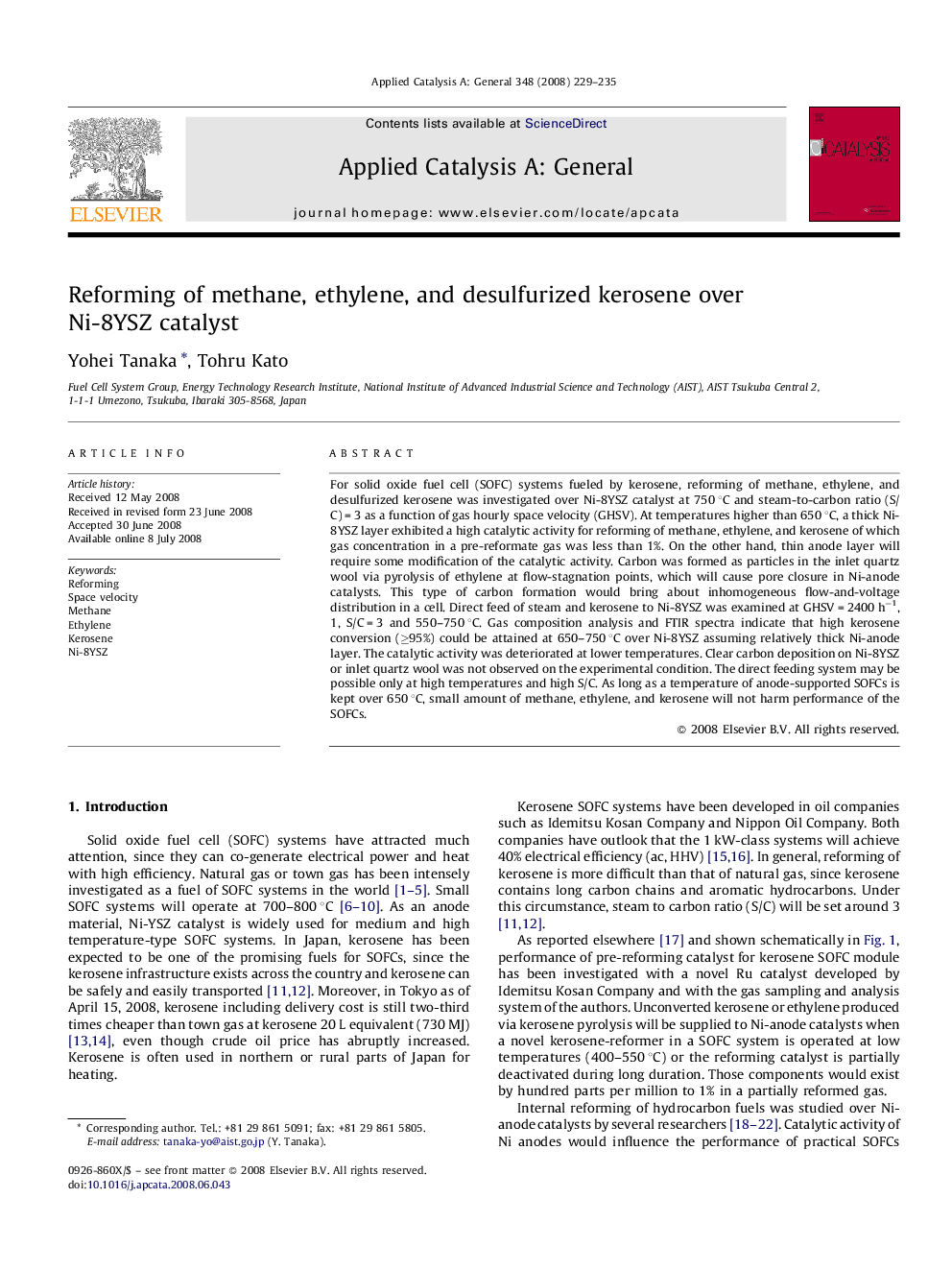| کد مقاله | کد نشریه | سال انتشار | مقاله انگلیسی | نسخه تمام متن |
|---|---|---|---|---|
| 43489 | 45972 | 2008 | 7 صفحه PDF | دانلود رایگان |

For solid oxide fuel cell (SOFC) systems fueled by kerosene, reforming of methane, ethylene, and desulfurized kerosene was investigated over Ni-8YSZ catalyst at 750 °C and steam-to-carbon ratio (S/C) = 3 as a function of gas hourly space velocity (GHSV). At temperatures higher than 650 °C, a thick Ni-8YSZ layer exhibited a high catalytic activity for reforming of methane, ethylene, and kerosene of which gas concentration in a pre-reformate gas was less than 1%. On the other hand, thin anode layer will require some modification of the catalytic activity. Carbon was formed as particles in the inlet quartz wool via pyrolysis of ethylene at flow-stagnation points, which will cause pore closure in Ni-anode catalysts. This type of carbon formation would bring about inhomogeneous flow-and-voltage distribution in a cell. Direct feed of steam and kerosene to Ni-8YSZ was examined at GHSV = 2400 h−1, S/C = 3 and 550–750 °C. Gas composition analysis and FTIR spectra indicate that high kerosene conversion (≥95%) could be attained at 650–750 °C over Ni-8YSZ assuming relatively thick Ni-anode layer. The catalytic activity was deteriorated at lower temperatures. Clear carbon deposition on Ni-8YSZ or inlet quartz wool was not observed on the experimental condition. The direct feeding system may be possible only at high temperatures and high S/C. As long as a temperature of anode-supported SOFCs is kept over 650 °C, small amount of methane, ethylene, and kerosene will not harm performance of the SOFCs.
Catalytic activity for reforming of CH4, C2H4, and kerosene were investigated over a Ni-8YSZ catalyst from the viewpoint of space velocity. At temperatures higher than 650 °C, a thick Ni-8YSZ layer exhibited a high catalytic activity for reforming of methane, ethylene, and kerosene of which gas concentration was less than 1%. On the other hand, thin anode layer will require some modification of the catalytic activity. Steam reforming of kerosene over Ni-8YSZ may be possible at high steam-to-carbon ratio and high temperatures. Figure optionsDownload as PowerPoint slide
Journal: Applied Catalysis A: General - Volume 348, Issue 2, 15 October 2008, Pages 229–235